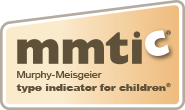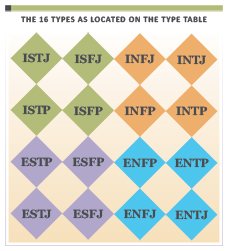Student Outcomes (Research Series – NC Part 3)
In the 2018-19 school year, CAPT funded a 2-year research study at Combs Elementary School in Raleigh, North Carolina utilizing the MMTIC® assessment with students and the MBTI® assessment with teachers. In the first-year study, researchers at the Friday Institute for Educational Innovation, North Carolina State University, designed and executed a mixed methods applied outcome study with 8 teachers and 130 third-grade students. The study employed a case study design overall that included training, empirical surveys, interviews and focus groups, and ethnographic observations, as well as the generation and collection of artifacts, such as lesson plans and student projects. (Follow these links to read the articles for Part 1 and Part 2.)
Before administering the MMTIC assessment to the third-grade students, teachers were trained by Dr. Elizabeth Murphy to incorporate typological choices into the classroom. For example, teachers might tell students that some of them may want to complete an assignment in groups with others while some students may want to work by themselves, thereby giving students the choice to express an introverted or extraverted way of working. Teachers were given weekly emails from Dr. Murphy with suggestions on how to bring type language into the classroom and in the second semester, the MMTIC assessment was administered to the third-grade students.
In the winter semester, the Combs school coordinator, who had been certified in both the MBTI and MMTIC instruments, provided weekly education sessions on the four psychological type preference pairs in a group verification process before providing students with their reported results from the assessment. In the fifth week, the coordinator introduced the students to decision-making using the psychological type Z-model.
The Z-model is based on Gordon Lawrence's psychological type model for decision-making that moves systematically through the 4 mental processes (Sensing/Intuition: information gathering mental processes and Thinking/Feeling: decision-making mental processes). The process starts with Sensing where relevant facts and past efforts are considered; it then moves to Intuition where new possibilities and future outcomes are imagined. The Thinking preference is applied to investigate the consequences of the decision at a system level, such as the production process or the organization. The Z-model process concludes by considering the perspectives of the Feeling preference and the impact of the decision on the people involved.
Students practiced applying the Z-model to a scenario that was relevant to a book the whole grade was reading, Peter Pan. The students were led in using the Z-model to help Wendy decide if she should stay in Neverland or return home. Students began by sharing details of what they knew (Sensing), for example, that Wendy likes caring for the Lost Boys. Next the students generated alternative ideas (Intuition), like the possibility for Wendy to go back and forth between Neverland and home. When asked what Wendy would need to make the solution work (Thinking), students offered suggestions like pixie dust and using Peter Pan as a guide. Finally, they considered how different decisions would impact the people in Neverland (Feeling), including Peter being happy with more family.
Student Outcomes
The seven main student outcomes were: (1) developing type awareness, (2) enhancing their self-awareness, (3) advocating for their choices, (4) challenging themselves to improve their stretches, (5) improving classroom community, (6) enhancing their self-management, and (7) promoting motivation and engagement. Three of these outcomes are discussed in more detail.
Advocating for Their Choices
Once students learned about their own personality types, they developed a better understanding for which options might align better with their preferences. A common example was shared by students who had a preference for Introversion. When they realized that they preferred working alone rather than in groups, they often chose to work alone. One student elaborated, "Well, when I was in like first grade, I was getting really bad grades because I was working in groups, like big, big groups and then I was getting like super annoyed and tired. But when I knew I was an introvert I started to drift off into doing my own work and I started to get better grades."
Challenging Themselves to Improve Stretches
When students were taught about the concept of strengths (using favored preferences) and stretches (leaning into less favored preferences), teachers emphasized that everyone has stretches that are more challenging for them and that is okay. Furthermore, they taught students that it is important to continue developing their stretches. An important way teachers affirmed these ideas was by modeling them. For example, one student explained, "So my teacher, none of her students are the same personality type as her which is harder because she really likes to teach her way but her students can't understand because she's like doing it how she likes to do, and she has to work on her stretches so she can be a better teacher."
These ideas clearly resonated with students. When asked about their stretches, many students responded with a statement like, "I want to accomplish my stretches, make them into what I accomplish." Combs administrators shared several stories of students challenging themselves including a student who selected a difficult recital piece. The administrator shared, "She could've played something that was much easier and been fine, but she wanted to stretch, so she took a risk to play a piece that she might hit a wrong note or two, but she'd rather be challenged by that then to play something that was easy, and she knew she would be successful. Again, I thought that was really impactful, because knowing this child, she would have last year played the piece that was easy because she's a perfectionist and she wants everything to be just so. But fast forward to this year, and she'd rather have a challenge and make a mistake than for it to be perfect and easy. That was telling."
Enhancing Self-Management
After knowing how they learn best, students began to manage their approach to schoolwork to produce quality work. For instance, one student shared that knowing his/her personality type made it easier to learn. "Because you would know your personality type and you know, so this is going to help me learn and so I wouldn't be bored. So, you're like, I could do this: that will make it fun and easier for me to learn, or I could do this: which would make me tired and not really functional. So, I think I'm going to go with this."
Likely as a result, at least in part, of both improved self-management and classroom community, student behavior improved. One teacher shared, "When kids have disagreements, it's like you know, we've talked about types so maybe they don't work the same as you. They're like 'oh'. It sort of clicks a little bit easier." This finding was corroborated by the behavioral referral data: Combs administrators indicated that the number of behavioral referrals for the third-grade class this year was "definitely the lowest number" compared to the other grades in the school.
Conclusion
The Combs study had a positive and meaningful impact on the teachers and students. Students learned the value of constructive use of differences in considering how to understand their friends and themselves. Constructive use of differences was demonstrated in self-management of behaviors towards how they learn best which may be different than their classmates; or in the awareness that when we do not understand someone's behavior, it may be because they have different preferences and therefore express themselves differently. We can all agree that these are valuable outcomes for students, as well as their parents and teachers.



_thumb.png)












